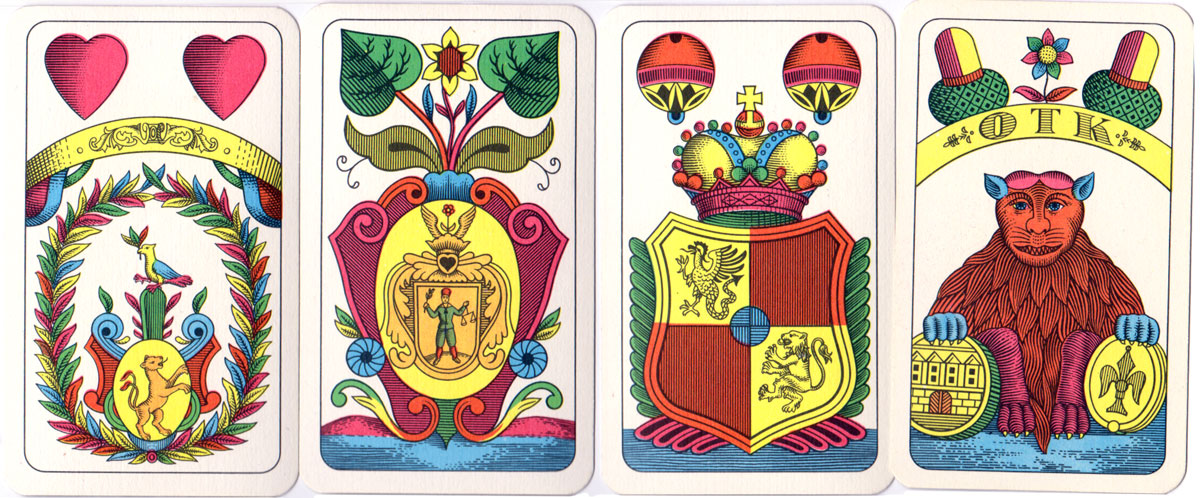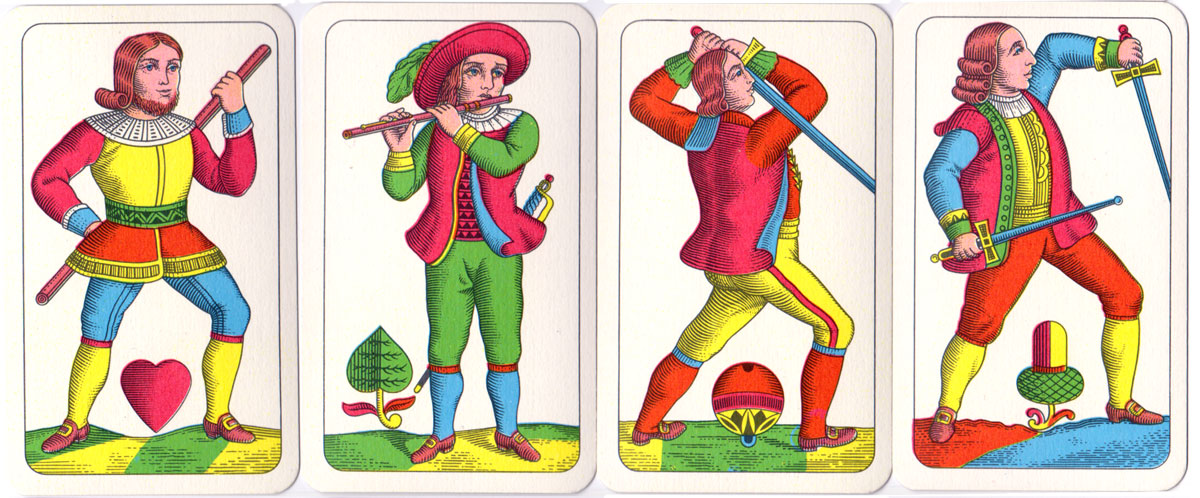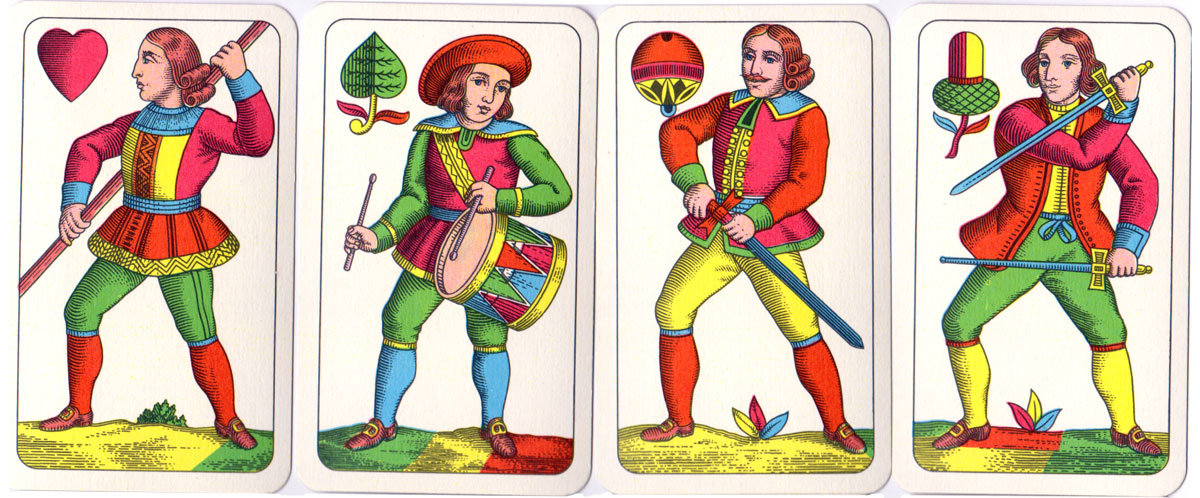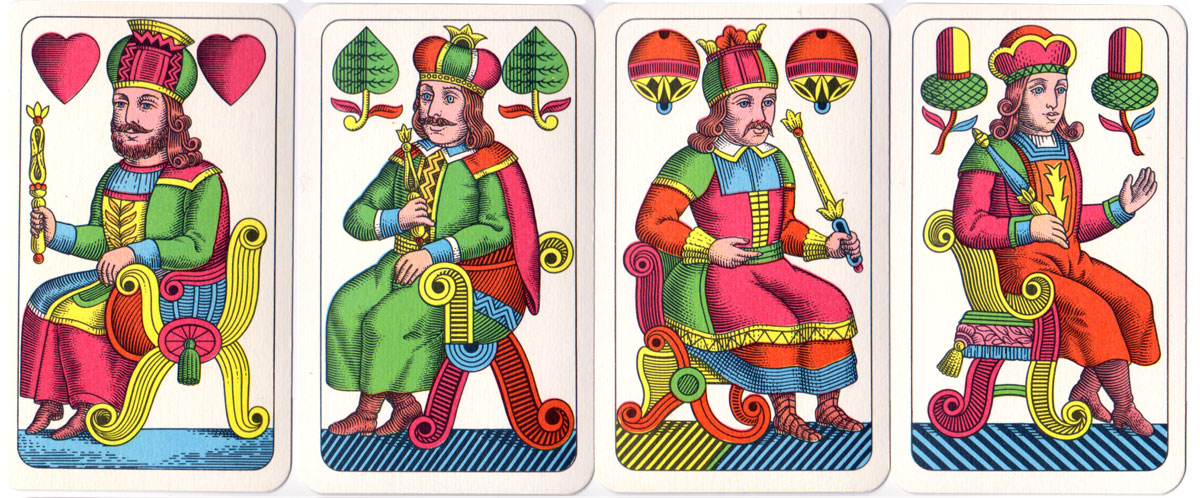Bohemian Pattern
The Bohemian Pattern, sometimes called the Prager Pattern, has roots in the 16th century.
The Bohemian pattern has roots in the 16th century
These images recall some 16th century German cards by Heinrich Hauk and others and which are also related to the Bavarian and Franconian patterns. These patterns are shared in neighbouring countries, in Austria as the Salzburger pattern and in Czechoslovakia it has become known as the Bohemian pattern. They are descended from the oldest of German-suited packs. As playing card designs were copied from workshop to workshop, characteristics from archaic models still survive today in cards such as these which have become standard patterns. The Knaves are divided into military categories and hold long spears, or halberds, swords and musical instruments. The Kings are seated and each has two suitmarks. The numeral cards have little vignettes at the bottom with animals or rural scenes.
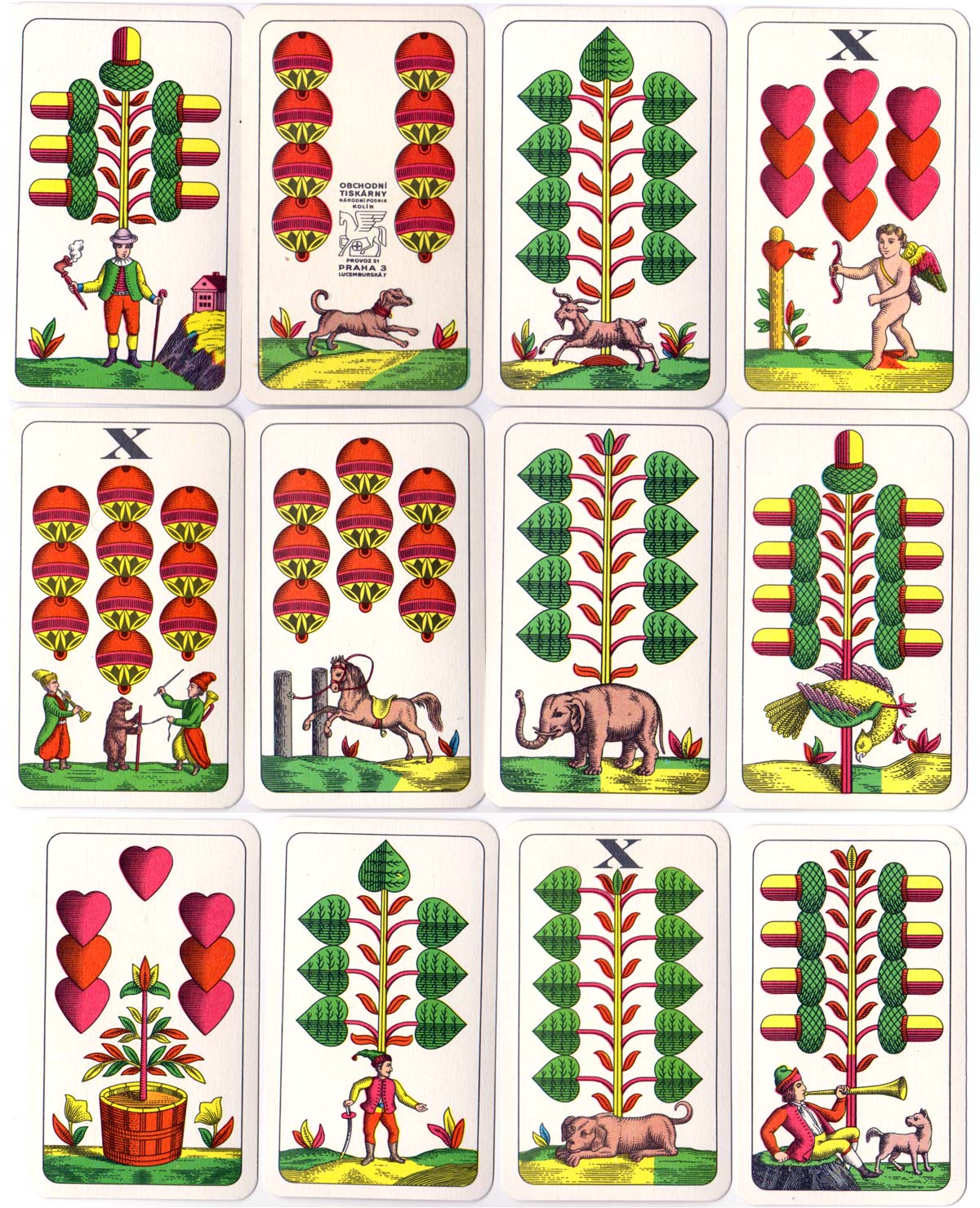
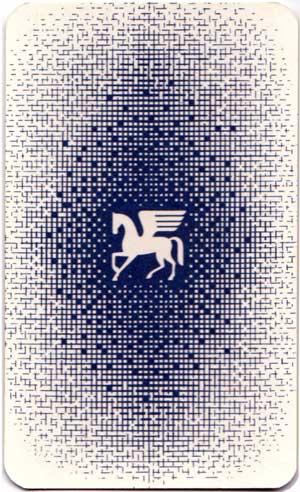
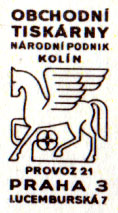
Above: cards from Bohemian or Prager pattern, 32 cards, manufactured by Obchodní Tiskárny, Prague, Czechoslovakia, c.1970. Some of the features in this pattern originate in much earlier German cards in the 16th century. The Pegasus motif on the reverse and on the eight of bells was inherited from Ritter & Cie, Prague. Click the image to see the box→
Cards from the area which was formerly the Austro-Hungarian Empire are immensely varied. Some of them have special regional differences and are named accordingly. Just as regional dialects are spoken within different areas, similarly, regional styles of playing cards follow the fashion for certain games, ethnic groups or social classes. The Bohemian pattern, also known as the Prager pattern, shares similarities with other old German-suited patterns, such as the Bavarian and Franconian, and preserves details which have survived from the earliest days of German cardmaking, such as soldiers holding weapons and animal or burlesque vignettes on the numeral cards.
German-suited packs have tended to remove the lower numeral cards, apart from the Deuces (Twos), to reduce the number of cards from 52 to 36 or 32 cards. This is a northern custom, whereas in areas using Spanish or Italian suit systems, it is more customary to drop the 8 & 9s and to have 10, 11 & 12 as the three courts, making 40 card decks.
• See also: Czech Nationalistic • Czech 'Hussite' pack • 1908 Prague Jubilee Exhibition • 'Jugendstil' designed by Artuš Scheiner, 1920 • Ritter & Cie "Art Deco", 1933 • Eagle Playing Card Co., Ltd.
Piatnik Prager Bild
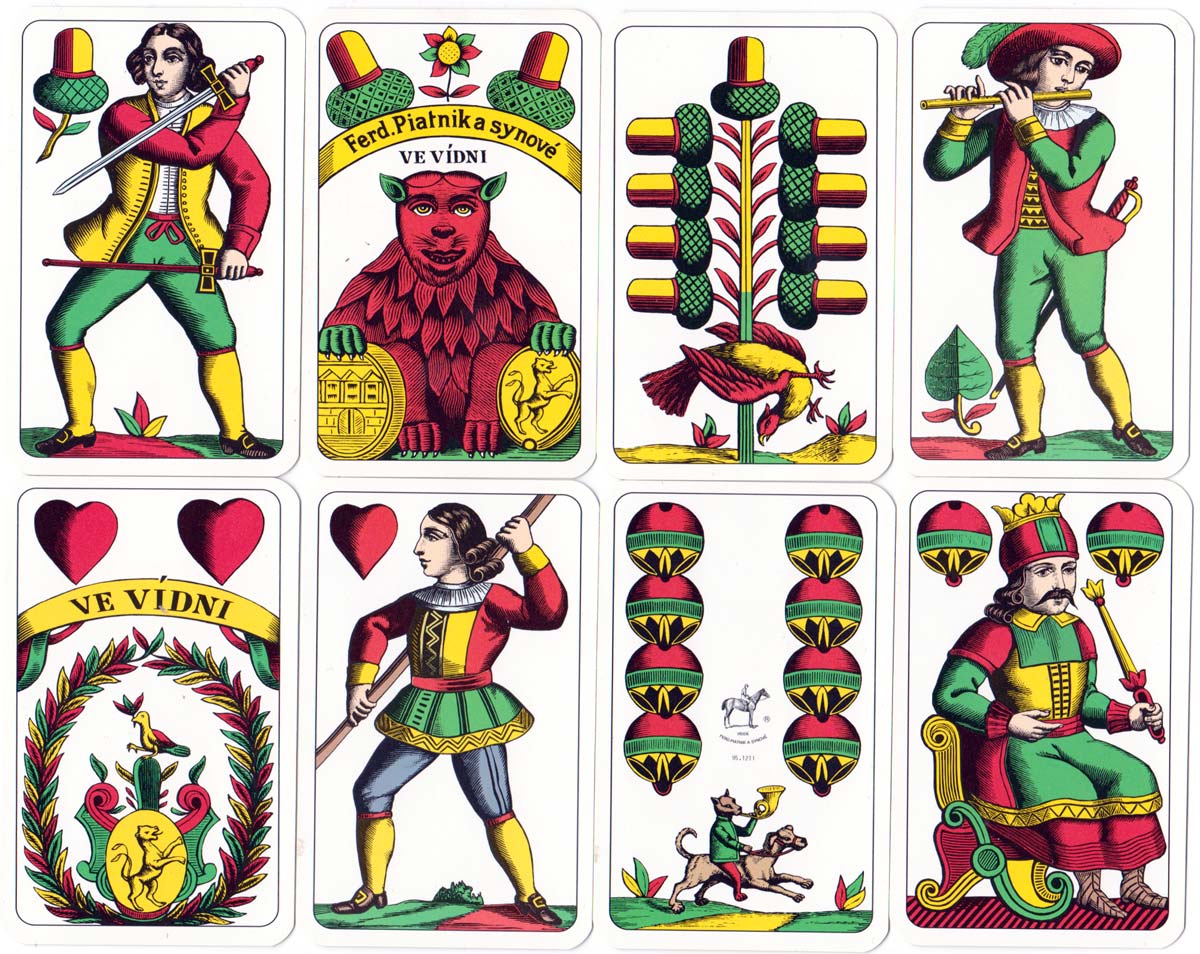
Above: the 'Prager' or 'Bohemian' pattern manufactured by Ferd Piatnik & Synové, Vienna, c.1995.
By Simon Wintle
Spain • Member since February 01, 1996 • Contact
I am the founder of The World of Playing Cards (est. 1996), a website dedicated to the history, artistry and cultural significance of playing cards and tarot. Over the years I have researched various areas of the subject, acquired and traded collections and contributed as a committee member of the IPCS and graphics editor of The Playing-Card journal. Having lived in Chile, England, Wales, and now Spain, these experiences have shaped my work and passion for playing cards. Amongst my achievements is producing a limited-edition replica of a 17th-century English pack using woodblocks and stencils—a labour of love. Today, the World of Playing Cards is a global collaborative project, with my son Adam serving as the technical driving force behind its development. His innovative efforts have helped shape the site into the thriving hub it is today. You are warmly invited to become a contributor and share your enthusiasm.

Related Articles
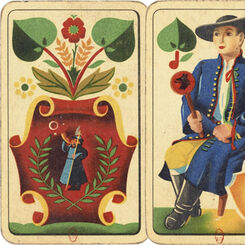
Czech Bohemian style playing cards
Czech Bohemian style playing cards with a charming aesthetic, reflecting the cultural and social lif...
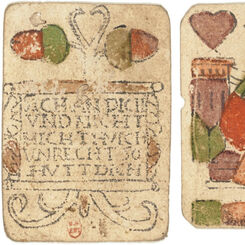
Early German playing cards
Some early examples of popular German playing cards from the XV and XVI centuries.
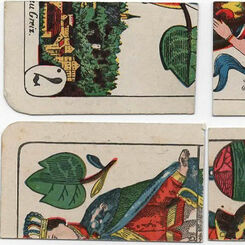
Notgeld - Emergen¢y Money
Notgeld - Emergency Money - was in rare cases issued on playing cards.

Hermanos Solesio
“Money Bag” pattern by Hermanos Solesi, late 18th c.
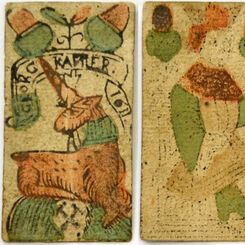
Georg Kapfler
Antique deck of old Bohemian playing cards of the German type manufactured by Georg Kapfler and date...
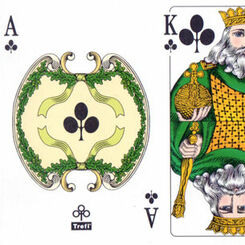
Rhineland Pattern by KZWP
Rhineland pattern by KZWP.

Casino No.240
Piatnik-Ritter No.240 - Obchodní Tiskárny Casino No.240.
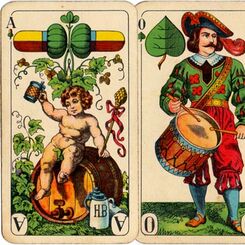
Later Bavarian Pattern
Later Bavarian single-ended pattern by Vereinigte Altenburg-Stralsunder Spielkarten-Fabriken

Old Bavarian pattern
Uncut sheets of playing cards of the Old Bavarian pattern by Michael Schatzberger, Passau, c.1780.
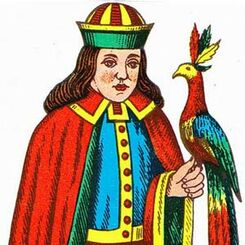
German Saxon Pattern
The German Saxon Pattern or “Schwerdter Karte”.
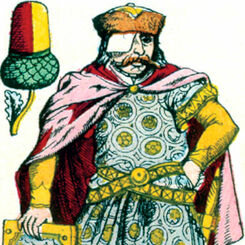
Czech Hussite Deck
Czech “Hussite” Pack engraved by Karel Hoffmann and first printed by Jan Ritter in 1895.
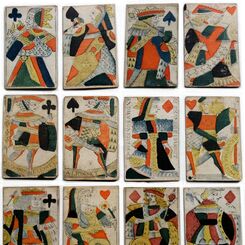
Provence Pattern - Portrait de Provence
The 'Provence' pattern contains figures which go back to the fifteenth century.

Lyon Pattern type iii
This pattern was used in various parts of eastern France but was ultimately replaced by the official...
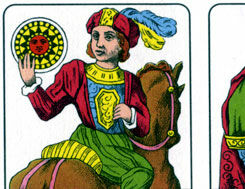
Piacentine Pattern
Piacentine Pattern, several double-ended versions.
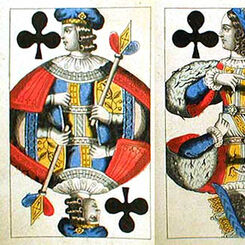
Wiener pattern
The Vienna pattern, or Wiener Bild, is a distant relative of the early Lyons pattern. The King of He...

Paris Pattern
The Paris pattern was established as such around the middle of the seventeenth century (based, perha...
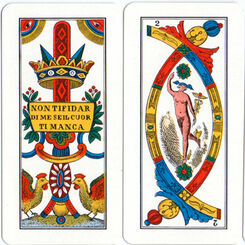
Trevisane pattern
The double-ended version of the ‘Trevisane’ pattern originated in the early 19th century.
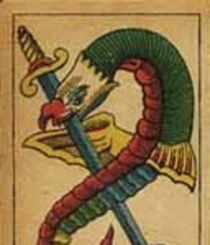
Portuguese Type Cards made in Belgium
Portuguese Type Playing Cards made in Belgium, c.1878.
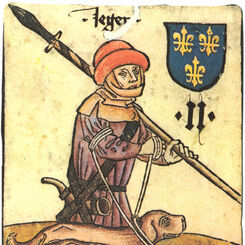
Hofamterspiel, c.1460
Hofamterspiel, c.1460
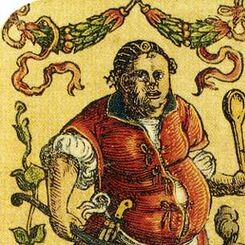
Peter Flötner, c.1545
Seven cards from a satirical pack produced by Peter Flötner of Nuremberg, c.1545. The suit symbols a...
Most Popular
Our top articles from the past 60 days


